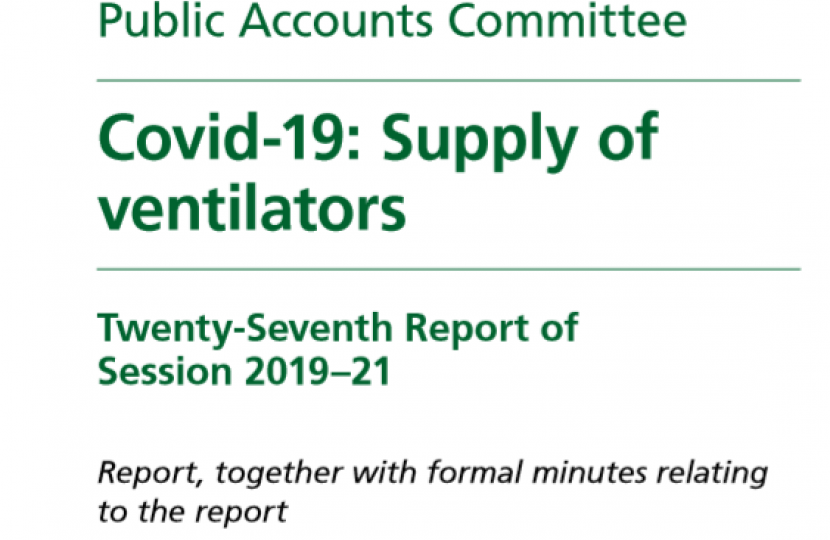
James has written an article for The Times' Red Box on the latest Public Accounts Committee Report on Covid-19: Supply of Ventilators:
"Hard work, collaboration, and commitment.
Today’s Public Accounts Committee report on the supply of ventilators for Covid-19 identifies those as the key elements in the successful efforts by the public sector and industry to increase the number available to the NHS to 30,000.
As a member of the Committee, I’ve become accustomed to scrutinising projects that have gone wrong and I suspect some civil servants feel the PAC comes to bury rather than praise them. That is not the case and our report concluded this project was a “significant achievement” that ensures the UK has a stockpile of ventilators should they be needed.
Shocking scenes from hospitals in Lombardy sounded the alarm that mechanical ventilators were likely to be a major treatment source for Covid-19 patients.
But the government was underprepared as its planning focused on a flu pandemic and didn’t highlight a need to increase the number of ventilators. The NHS didn’t even know how many it had - a questionnaire sent to Trusts established 7,400 were available.
To make matters worse, estimates of how many mechanical ventilators would be needed in a worst-case scenario changed repeatedly - from 59,000 in February to 6,200 by April.
That was the backdrop to the twin track approach undertaken. The Department of Health and Social Care focused on existing suppliers and the global market; and a new Cabinet Office “Ventilator Challenge” was launched. Both programmes operated on the basis that securing as many ventilators as possible, as quickly as possible, was necessary to saves lives.
As our report set out, this involved taking on more risk and meant costs were higher than would be expected in normal times. But the target was met.
DHSC secured 11,000 mechanical ventilators of all types in an increasingly competitive market at average cost of £22,300.
The Ventilator Challenge brought together clinicians, regulators, and departments to support decision-making and funded multiple designs until they were not viable or needed. 15,000 ventilators were delivered in just four months - rather than the years it would normally take - at an average cost of £18,300. Most were a new product from Penlon, supported by the High Value Manufacturing Catapult, Ford, McLaren F1, Siemens, and others. The remainder came from existing designs from Smiths Medical and Breas Medical, supported by firms including Rolls Royce, and GKN.
As it turned out, lockdown slowed the virus’ spread and patients that required a ventilator had one. However, ministers consciously set higher targets to ensure spare ventilator capacity was in place.
Despite the exceptional circumstances, our Committee recommended the government learn lessons for future programmes and I would suggest a few.
First, the DHSC and NHS need to be better prepared for emergencies and have an up to date asset register of critical equipment and plans for rapid procurement.
Second, having a cross cutting team meant the Cabinet Office could adopt an agile model, accelerate processes, and keep options open during the procurement.
Third, rapid scale up of production was achieved by matching engineering expertise with larger manufacturers’ capacity.
At the end of our committee session, perhaps unusually, I asked officials whether any of the industry participants or civil servants involved in the programme been recognised in the Covid-19 honours list.
So far, none have. In my view they deserve to be."

